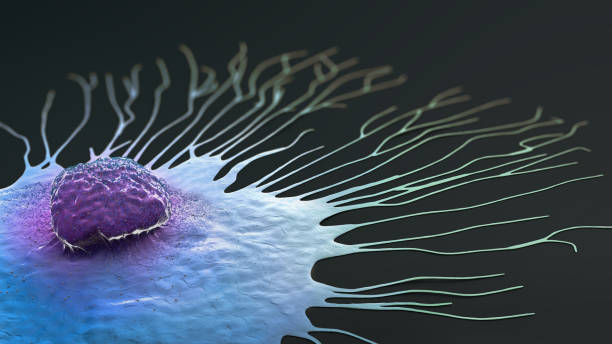What happens and when is cancer considered incurable?: The differences between advanced cancer and metastasis

Hearing the diagnosis of cancer with metastasis is devastating. Curing cancer at this stage is often one of the greatest challenges in medicine, although scientific advances have improved significantly. But is metastasis the end of everything? The American Cancer Society has clarified the difference between advanced cancer and metastasis in a comprehensive report on its website, and that could change the situation.
The term "advanced cancer" is most often used to refer to cancers that cannot be cured. This means that these types of cancer will not completely disappear with treatment, or it will not be possible to prevent them from returning, the website says.
Metastasis occurs when cancer cells spread from the primary tumor to other organs or tissues in the body. Once cancer has spread, treatment becomes more complex, as it involves combating malignant cells in multiple parts of the body.
Radiation oncologist Paula Cuadrado Guerrero explains to TopDoctors that the spread of cancer cells can occur through the lymphatic or bloodstream systems, carrying malignant cells to distant sites in the body. "This phenomenon is fundamental to understanding the aggressive nature and management of cancer," she asserts.

Photo: iStock.
The American Cancer Society points out that not all metastatic cancers are advanced cancers ; for example, testicular cancer can spread to other parts of the body and still be highly curable.
How cancer spreads from one organ to another: Scientists discover the mechanisms of metastasis Scientists at the Sloan Kettering Institute in New York, led by Spanish oncologist Joan Massegué, discovered that cancer's ability to metastasize depends on its ability to co-opt natural wound repair pathways, opening up a path for potential treatment.
The scientific breakthrough, published in the journal Nature Cancer and also announced by the Sloan Kettering Cancer Center itself, provides a novel framework for thinking about metastasis and how to treat it.
Metastasis, the spread of cancer to other parts of the body, is responsible for 90 percent of cancer deaths. However, little is known about what makes cancer cells capable of reproducing.
This study by researchers at the Sloan Kettering Institute concludes that metastasis-initiating cells employ a trick to spread: they co-opt the body's natural wound-healing capabilities.

Photo:
There were previously indications that cancers might use wound-healing pathways to support their growth. In the 1980s, researcher Harold Dvorak dubbed tumors “wounds that won't heal.” But the new findings present the first detailed picture of how this process works at the cellular and molecular level.
To spread, cancer cells must successfully separate from their neighbors, pass through the layers of tissue that separate them from the circulation, swim or crawl to a new location in the body through the blood or lymphatic fluid, exit these vessels, then take root and begin growing in the new location.
At each step of this process, most of the loose cancer cells die. In reality, less than 1 percent of all cancer cells that break away from a tumor will eventually form measurable metastases .
eltiempo



